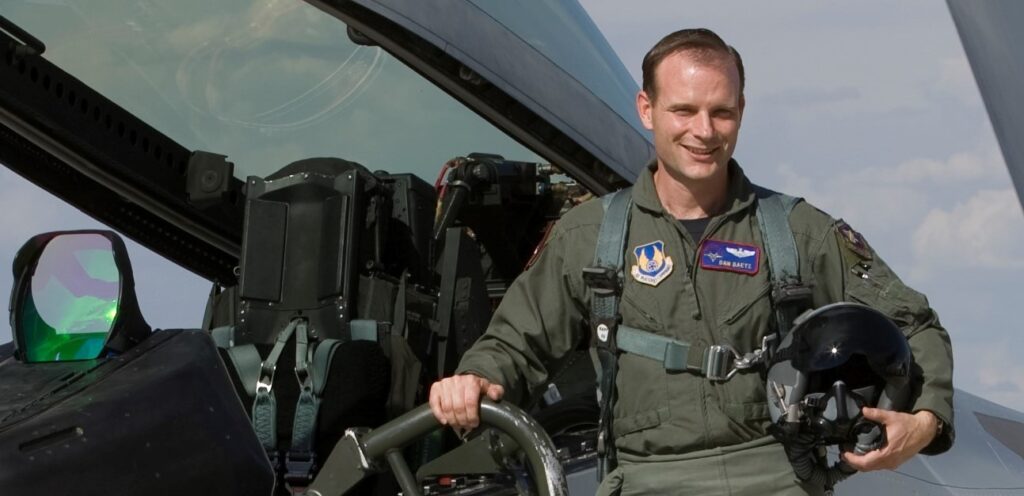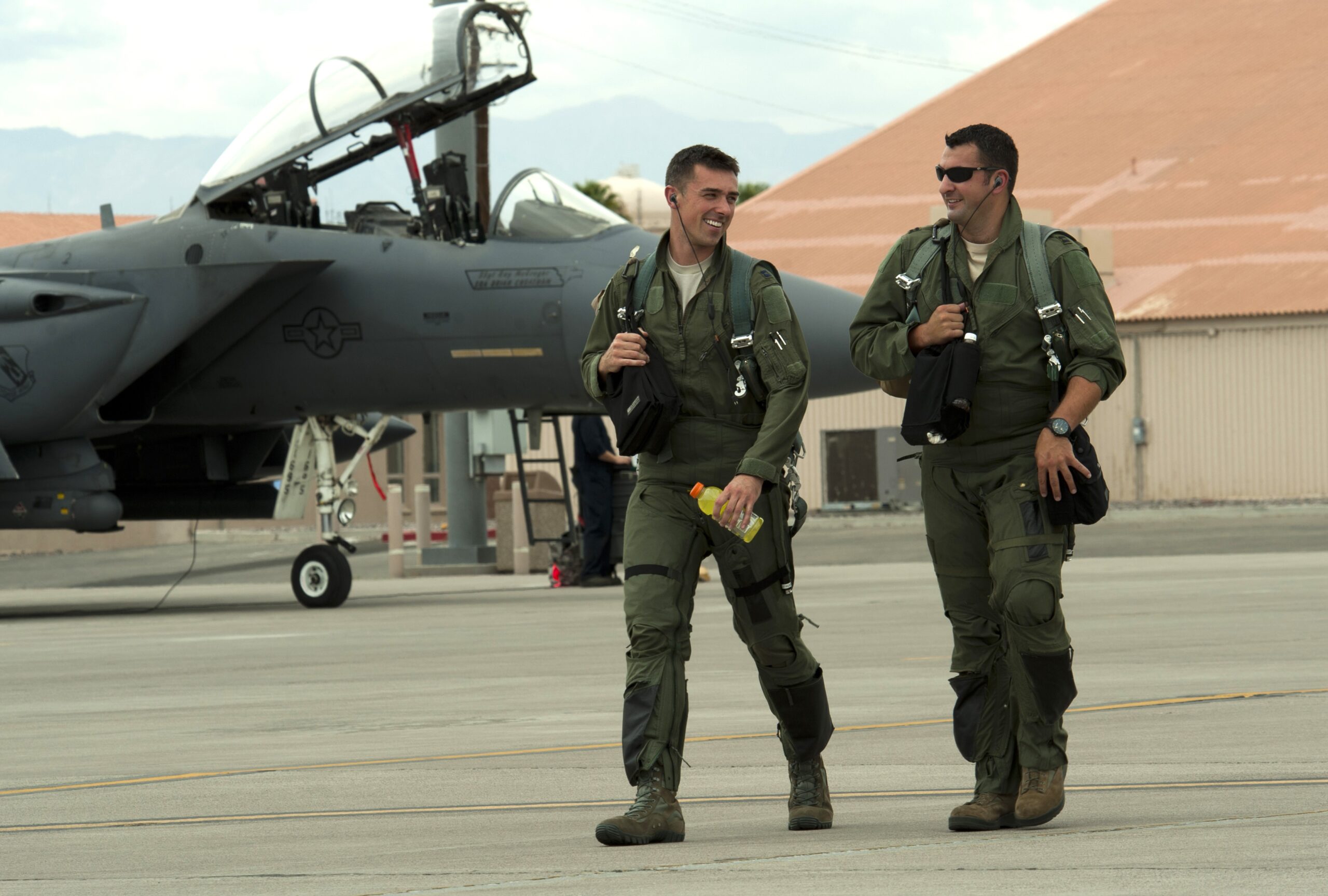Coming up with intensely interesting characters is one of the fun challenges of being a fiction author.
Knowing a character’s culture—whether a distant backstory or their current reality—is a significant piece of the puzzle.
If you’re writing a character who is an aviator, tapping into the deep well of flying culture can make your protagonist, antagonist, or support character leap (fly?) from the page.
CULTURE is the first element of the CLICKS acronym I introduced in my introduction on how to write great flying scenes.
In this post, I’ll tackle two cultural elements of military flying that may seem in opposition:
- Camaraderie
- Competition
These go much deeper than the beach volleyball scene from Top Gun!
Let’s start with CAMARADERIE.
At a broad level, a sense of common respect exists among all those who fly. When I, as an Air Force F-15 pilot, ran across a Marine F-18 driver, we shared a mutual bond as military aviators. This remained even if we trained against each other and argued over who shot whom first in virtual combat… 😊
But the most intense camaraderie lives at the unit level. Here, we have our squadron patches and challenge coins (you have yours handy, don’t you?). This unit identity infused us with passion and purpose. The most enduring personal marker—our flying callsign—was birthed in the company of our squadron-mates. (More about that Naming Ceremony in a future post…)
A second key element of flying culture is COMPETITION.
Competition takes many forms, including these:
- Winning against an enemy (or simulated enemy)
- Advancing in respect & responsibility
- Pushing oneself
Given that the whole purpose of a military flying unit is to help win wars, the core driver of high performance is to beat the enemy. Now, when that enemy is poorly defined—or defined in a way that invites skepticism—morale in a flying unit will suffer. On the other hand, if most believe they’re fighting for a righteous cause, aviators will absorb hits and losses and bring their A-game to the fight.
Advancing within one’s unit (or within the broader community, say, of all F-22 pilots) is important for several reasons. Earning respect from one’s peers is important, of course—hence such events as dogfight competitions. But there are practical reasons, too. New wingmen eventually need to learn to lead increasingly complex formations of aircraft into battle. And, given the military rank structure, commanders at all levels need to develop their replacements. So constant evaluation and feedback structures are ingrained from day one. (Stay tuned for a future post on feedback culture and the ever-important Mission Debrief…)
Any discussion on aviator competitiveness would be incomplete without mentioning the inherent drive to push oneself. People don’t become aviators to join a race to the bottom. Whether it’s mastering foul-weather landings, precision airdrops, or aerial gunnery, countless opportunities exist to flex the human drive to perform at one’s best.
That’s a snapshot of CAMARADERIE & COMPETITION—two vital aspects of flying culture that are often in tension with one another.
What a rich playground for you to flesh out memorable characters caught in stiff conflict!
Until next time…
Dan



